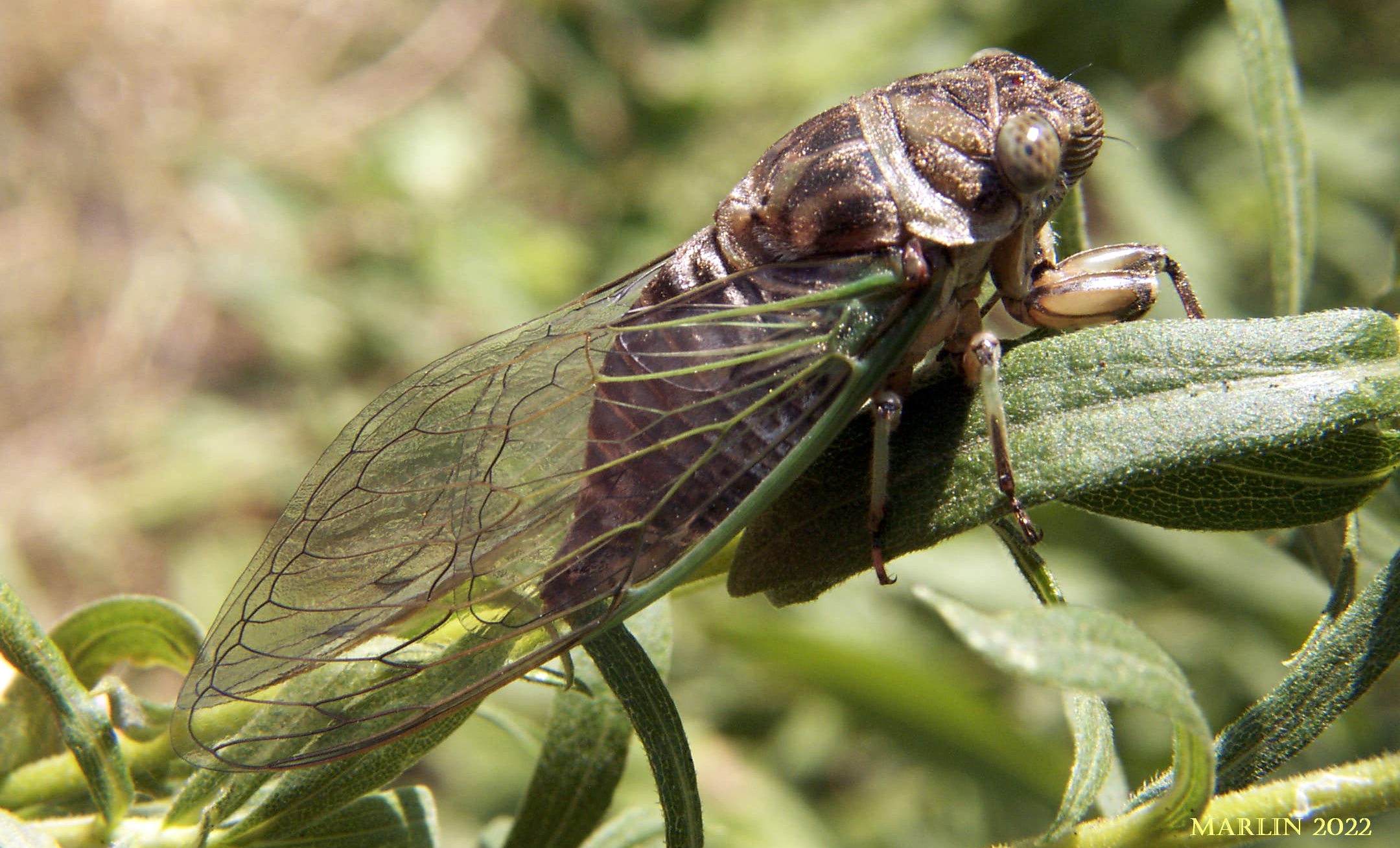Annual Cicadas – Tibicen spp.

Cicadas are flying, plant-sucking insects of the Order Hemiptera. Their closest relatives are leafhoppers, treehoppers, and fulgoroids. Adult cicadas are large insects, and the males are said to be the loudest insect on Earth, at an ear-shattering 110 decibels. With prominent wide-set eyes, short antennae, and clear wings held roof-like over the abdomen, cicadas are probably best known for their conspicuous acoustic signals or “songs”, which the males make using special structures called tymbals, found on the abdomen.
All but a few cicada species have multiple-year life cycles, most commonly 2-8 years. In most cicada species, adults can be found every year because the population is not developmentally synchronized; these are often called “annual” cicada species. In contrast, populations of the periodic cicada species are synchronized, so that almost all of them mature into adults in the same year. The fact that periodic cicadas remain locked together in time is made even more amazing by their extremely long life-cycles of 13 or 17 years.

Periodic cicadas are found in eastern North America and belong to the genus Magicicada. There are seven species — four with 13-year life cycles (including one new species described in 2000), and three with 17-year cycles. The three 17-year species are generally northern in distribution, while the 13-year species are generally southern and midwestern. Magicicada are so well-synchronized developmentally that they are nearly absent as adults in the 12 or 16 years between emergences. When they do emerge after their long juvenile periods, they do so in huge numbers, forming much denser aggregations than those usually achieved by cicadas. Many people know periodic cicadas by the name “17-year locusts” or “13-year locusts”, but they are not true locusts, which are a type of grasshopper.

Order Hemiptera: True Bugs number almost 5,000 species in North America, and 40,000 worldwide. They have mouthparts formed into a beak, adapted for sucking plant juices or the liquefied insides of their animal prey.
Suborder Auchenorrhyncha – Cicadas & Planthoppers
Suborder Sternorrhyncha – Aphids, scales, mealybugs, jumping plant lice

